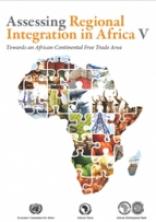Assessing Regional Integration in Africa V

Interregional coordination is growing. COMESA, EAC and SADC held their first Tripartite Summit in October 2008, where the Heads of State and Government of the three RECs agreed to establish a Free Trade Area (FTA). This Tripartite FTA brings together 26 African countries, with a combined population of 530 million people, and a total GDP of USD 630 billion, or more than half of the output of Africa’s economies. It has galvanized the interest of Africa’s policymakers towards a much broader Continental FTA. Accordingly, the African Union Ministers of Trade, at their 6th Ordinary Session in Kigali in November 2010, recommended fast-tracking the establishment of an African Continental Free Trade Area (C-FTA).
One of the main challenges facing Africa’s Regional Economic Communities (RECs) in implementing their integration programmes is overlapping membership. Consider the case of COMESA, EAC and SADC. EAC is already a common market, but it shares four member States with COMESA and one Member State with SADC. Five SADC member States are members of Southern African Customs Union (SACU). Ten countries in the region are already members of customs unions, but all of them are also in negotiations to establish alternative customs unions from the one they now belong to. COMESA and SADC have seven member States in common that are not part of a customs union, but all are preparing customs unions. So, of the 26 countries in COMESA, EAC and SADC, 17 are either in a customs union and negotiating an alternative customs union to the one they belong, or are negotiating two separate customs unions. Similar overlaps, though to a lesser scale exists among members of RECs in Western and Northern Africa.
Deepening Africa’s integration goes beyond harmonising RECs memberships and policies. Indeed, the African countries have agreed on a Minimum Integration Programme (MIP). The MIP comprises those activities, projects and programmes that the RECs have selected to accelerate and bring to completion as part of the regional and continental integration process. As a mechanism for convergence of RECs, it focuses on a few priority areas of regional and continental concern, where RECs could strengthen their cooperation and benefit from best integration practices.